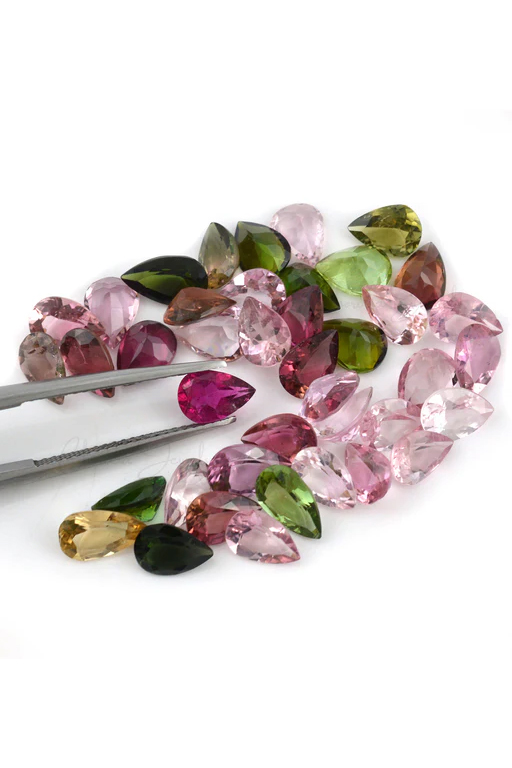Tourmaline belongs to the silicate family. It is one of the few minerals in which all the colors of the rainbow can be found in a single mineral species. This makes tourmaline one of the most fascinating minerals. It is highly valued for its various beneficial properties in lithotherapy.
Brief History: The name tourmaline comes from Sinhala, the official language of Sri Lanka, “turmali”, which means “stone of many colors”.
Tourmaline has a vast and ancient history, known for thousands of years. The stone has often been confused because of its many colors, which have made its identification difficult.
The Greek philosopher Theophrastus began to take an interest in the colored stone and to investigate its properties. He eventually discovered that if tourmaline was heated, it acquired piezoelectric properties, capable of attracting various light objects such as straw, ash or small pieces of wood. Years later, in ancient times, tourmaline, more specifically black tourmaline, was linked to magic or to sorcerers who used the stone to protect themselves from spirits and evil forces.
In the 17th century, the popularity of this natural stone grew and it was increasingly used in jewelry.
A century later, Dutch merchants began importing tourmaline from Sri Lanka.
They discovered that the stone has piezoelectric properties and nicknamed it ¨as trekker¨ which means ash catcher.
Today, the beauty of tourmaline has spread throughout the world, without losing its value. Many jewelers love to work with this stone to create jewelry such as bracelets and necklaces and rings
- Color: Tourmaline is famous for its variety of colors, including pink, green, blue, red, yellow, black, and multi-colored stones known as “watermelon tourmaline” for their pink centers and green rim. The range of colors is due to the presence of various trace elements in the crystal structure.
- Hardness: Tourmaline is relatively hard, with a hardness ranging from 7 to 7.50 on the Mohs scale. This makes it suitable for use in jewelry but requires care to avoid scratches or damage.
- Varieties: Tourmaline comes in several varieties recognized by color. For example,
“rubellite” refers to deep red or pink tourmaline, “indigolite” to blue tourmaline, “verdelite” to green tourmaline, and “chrome tourmaline” to deep green stones containing chromium . - Origin: Tourmaline is found in various locations around the world, including Sri Lanka, Brazil, Afghanistan, Nigeria, and Madagascar.
- Clarity: Tourmaline can range from clear to opaque, and some stones exhibit asterism (a star-like effect) or cats eye (chatoyancy) when properly cut and polished.
- Cut: Tourmaline is often cut into a variety of shapes, including oval, round, pear-shaped, octagonal, or cushion-cut. Depending on the cut, it can enhance the color and optical properties of the stone.
- Treatment: Some tourmalines may undergo treatments such as heat treatment or irradiation to improve their color or clarity. It is essential to disclose any treatments when buying or selling tourmaline.
- Symbolism: Tourmaline is associated with protection, healing, and balance. It is believed to have calming and stabilizing properties, making it a popular choice for holistic and spiritual jewelry.
** Please check prices according to color, quality and size.









